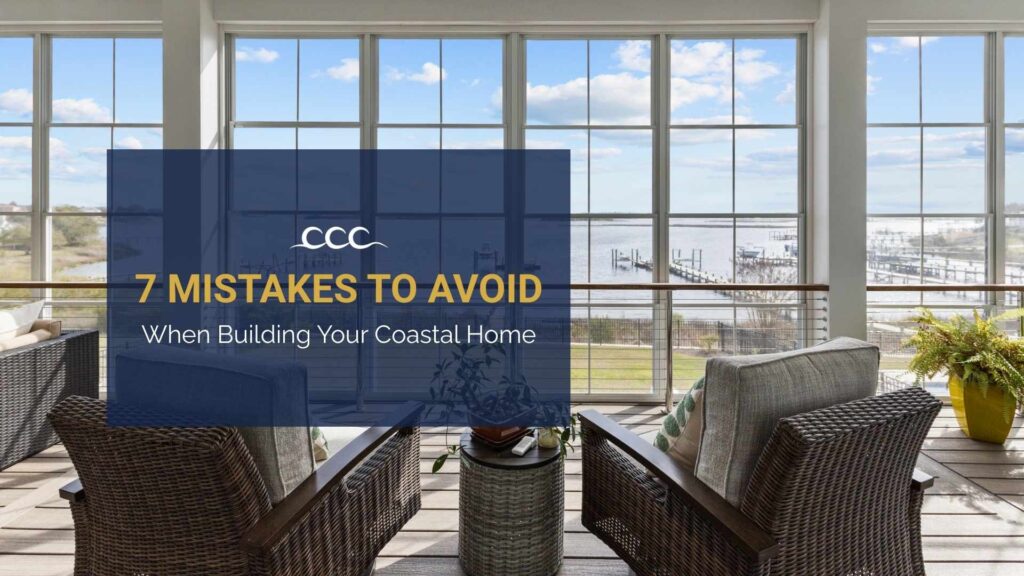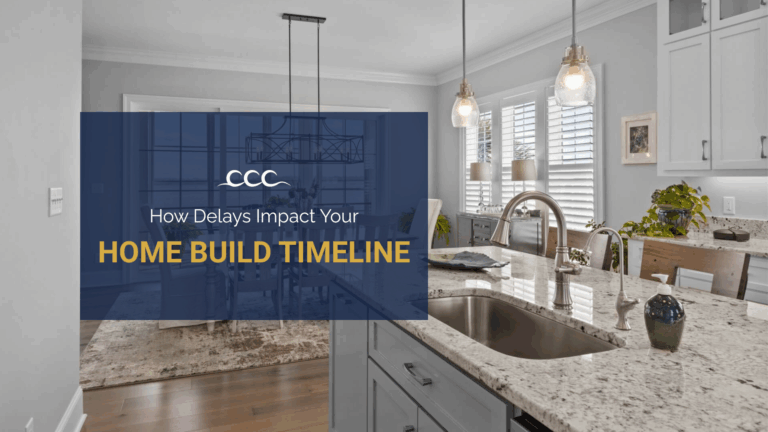The moment is here: you’ve secured your slice of the North Carolina coast and are ready to start building the home you’ve always imagined. Before diving in, it’s important to understand the challenges that come with coastal construction, potentially turning this dream into a costly and frustrating experience. To help you avoid setbacks and make the most of your investment, we’ve outlined the most common mistakes homeowners face and how to steer clear of them.
1. Ignoring Local Building Codes & Regulations
Coastal areas in North Carolina are subject to strict building codes that account for hurricane-force winds, flooding and storm surge. These include compliance with FEMA flood zone requirements, wind load ratings set by the North Carolina Residential Code and elevation standards established by local municipalities. Failing to meet these regulations can lead to costly fines, construction delays or even having to redo completed work. Partner with an experienced team familiar with the Crystal Coast permitting processes to ensure your project meets every requirement from the start.
2. Underestimating The Coastal Climate
Salt air, high humidity and strong winds can take a toll on building materials and furnishings. Along the North Carolina coast, where hurricanes, salt-laden breezes and year-round humidity are common, these conditions can accelerate wear even further. Choosing materials and finishes that are not designed for coastal environments can lead to premature damage and costly repairs. Opt for durable, functional materials specifically curated for coastal living.
3. Overlooking Proper Site Selection & Preparation
The location of your home is one of the most critical decisions in the building process. Factors like flood zones, erosion risks and storm surge patterns can vary significantly between neighborhoods. Building too close to the water without understanding these risks can jeopardize your investment.
A professional site assessment should include soil stability, base flood elevation, and drainage planning to ensure your home is protected. In areas like Emerald Isle and Atlantic Beach, this often means elevating the structure on pilings and designing proper grading to direct water away from the foundation. Partnering with experienced local builders like Crystal Coast Construction will ensure your coastal home remains secure and resilient for decades.
4. Skimping On Quality Craftsmanship & Details
A coastal home requires attention to detail to withstand the unique challenges of its environment. Cutting corners on these details can lead to water intrusion, structural damage and faster material deterioration. Prioritizing quality construction techniques and durable finishes ensures your home not only looks beautiful but also performs reliably in the demanding coastal environment.
5. Neglecting Indoor/Outdoor Living Flow
One of the joys of living near the ocean is the seamless connection between indoor and outdoor spaces. Failing to design for this natural flow can limit your enjoyment and the functionality of your home. Thoughtful layouts with large windows, sliding doors and covered patios not only expand your living area but also maximize ocean views and natural light, creating a space that truly feels connected to the coast.
6. Not Planning For Budget & Timeline
Building a custom coastal home often involves unexpected costs and delays. Start by creating a detailed budget that includes not only construction costs but also permits, site preparation, and weather-related contingencies. Set aside a 10–15% buffer for unforeseen expenses, and review your budget regularly as the project progresses. Open communication with your team and frequent progress check-ins can help keep costs under control and prevent surprises. Careful planning upfront ensures a smoother build and protects your investment.
7. Forgetting Energy Efficiency & Sustainability
Coastal homes face unique environmental challenges. Incorporating energy-efficient systems and sustainable design not only reduces your ecological footprint but also saves money in the long run. Features like impact-rated windows with low-E coatings, spray foam insulation for tight humidity control and energy-efficient HVAC systems are particularly valuable on the Crystal Coast. Adding renewable options like solar panels or smart home technology can further reduce utility bills while increasing comfort. Discuss these options early with your builder to integrate them seamlessly.
Build With The Best
When it comes to building on the North Carolina coast, experience matters. Crystal Coast Construction has been designing and building custom homes in Emerald Isle, Morehead City, Atlantic Beach and surrounding areas for decades. Our team understands the unique demands of coastal construction, from navigating local building codes to selecting durable materials that stand up to salt air, humidity and high winds.
We combine expert craftsmanship with a personalized approach, ensuring every detail reflects your vision while protecting your investment for years to come. Whether you’re building a forever home or a vacation retreat, we make the process seamless and stress-free.
Start your custom coastal home with a team that knows how to build it right. Schedule a consultation with Crystal Coast Construction today.



